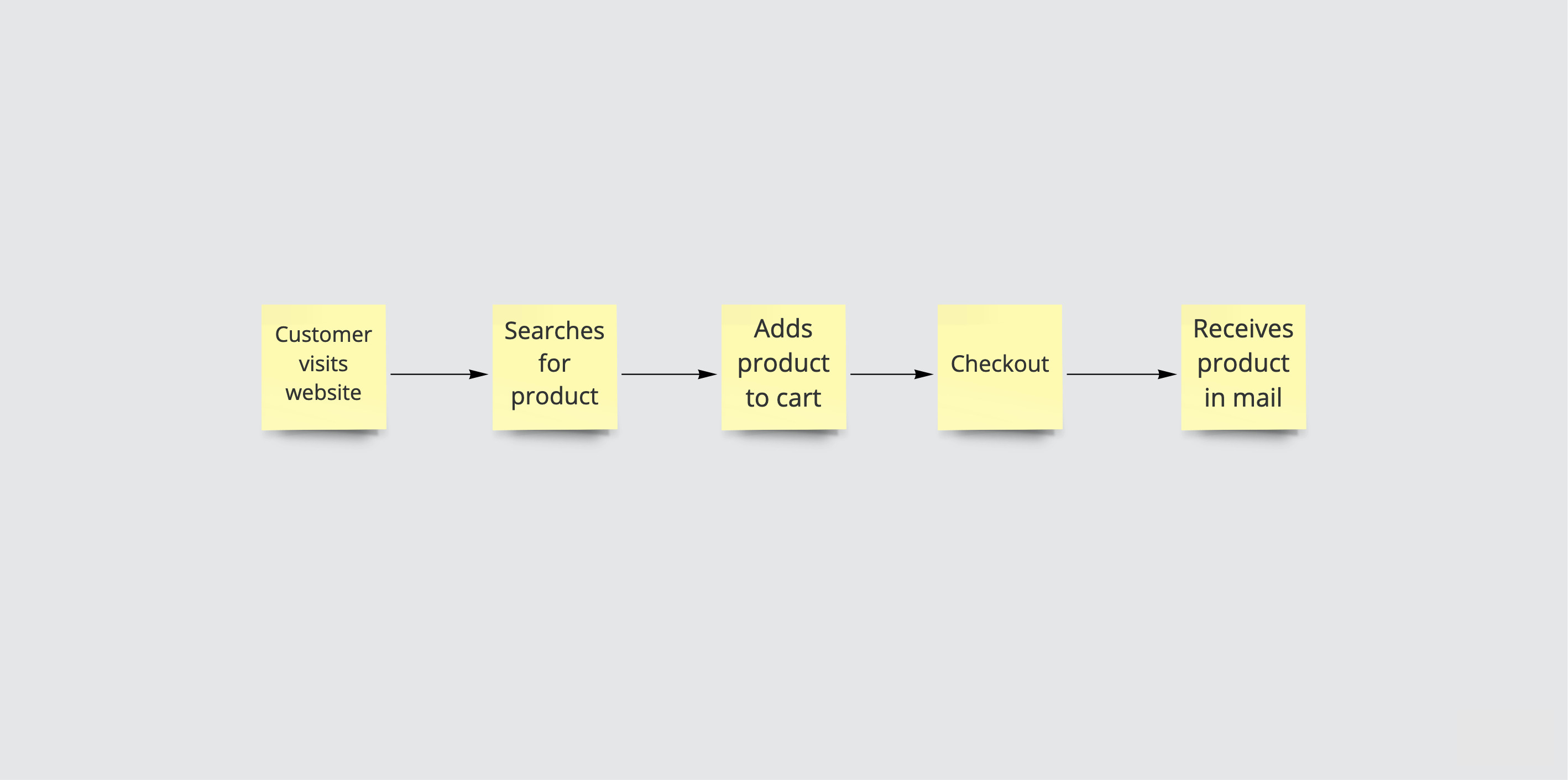Your MVP was a success. Your understanding of the market was dead-on, and now you have a substantial, growing user base. To meet their needs, you’ve rapidly released new features. To support those features, your organization has added processes and people. Your product is delivering massive value to your customers, but cracks are starting to show; You’re not as fast to market with new features as you used to be. Customer service inquiries are increasing, and it’s taking longer to resolve them. You’re reacting to user feedback instead of actively seeking it out.
These are issues that adversely affect your product’s ability to deliver value, but they’re not endemic to the product, itself. As such, the product design tools with which you’re familiar may not be able to identify and help resolve these issues.
Let’s take a look at a representative use case:
A local outdoor goods retailer thinks they could increase revenue if they add online ordering and delivery by mail. Their MVP’s critical path looks like this:

Online ordering takes off! It’s so successful that the business grows to include a second location and additional warehouse space. They add curbside pickup as a feature and hire additional staff to meet demand. Unfortunately, they also start to experience serious customer service and organizational issues — late deliveries, inaccurate inventory, mispacks.
They need to press pause and consider the organizational people and processes that support their retail service.
Here’s what our online retailer’s current process might look like:

There are some obvious shortcomings in their fulfillment and inventory management processes. When they had a single location doing a few orders a day, it was easy for any employee to check email, pick an item off a shelf, and prepare it for shipment. As their service and organization has grown, that process has shown itself not to be scalable. Their ultimate business goals are still the same, and the customer journey remains unchanged, but it’s time to address them differently.
For organizations with a maturing product, a service blueprint workshop is a good next step. The blueprint provides comprehensive, visual documentation of the relationships between your product and the people and processes that support it. It helps you identify opportunities for improvement, discover weaknesses, and bridge cross-team efforts. It broadens your focus, showing your product as the customer-facing aspect of an organizational service.
Here’s what the blueprint might look like for an aspirational future-state of their service:

Through documenting their service, they’ve identified the backstage actions and processes that are critical to delivering value to the end user. The customer experience remains the focal point of the service, but we now have visibility and shared understanding of how that experience is supported behind the scenes. What previously may have been ad hoc or loosely organized can now be formalized, measured, and iterated on. Instead of putting out fires, they can focus their energies on thoughtful, strategic growth.
A service blueprint is a robust, powerful tool, but creating it doesn’t have to be a major investment. With a committed, cross-functional team of stakeholders, a one-day facilitated workshop is enough to document and analyze the existing service, and to define goals, responsibilities, and next steps. Your team will emerge energized with consensus on opportunities for improvement.
Interested in hearing how a service blueprint can be part of your plan for strategic growth. Let’s talk!